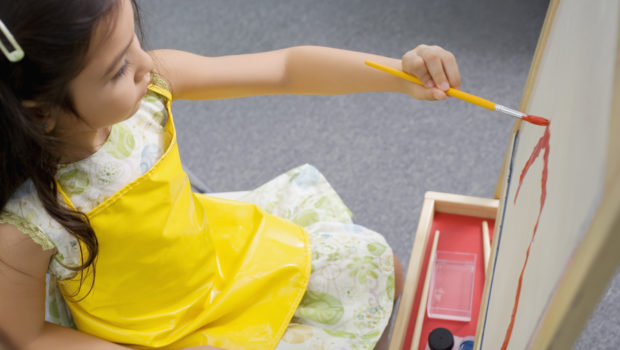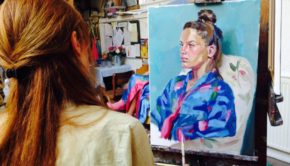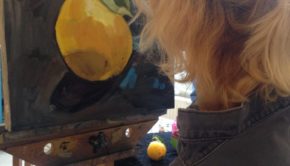Does Art Have A Place In The Language Learning Classroom?
Learning a language is a very creative process; by its very nature language is creative. A lot of the time teachers focus on teaching a language in a very rigid, logical manner – which makes sense when you are learning the fundamental rules of grammar – but there is not a lot of room for creativity. As a consequence, learners who tend to be more creative do not benefit from the learning process as much as they could, which means that our lessons are not as inclusive as they should be.
To resolve this issue, a simple and effective way to bring creativity into the classroom is through the use of art. Young Learners will enjoy working with colours and different materials to create pictures or picture stories which can be used in the learning process. Working with visuals brings learning to life and contributes to retention, so art is a great way to complement a lesson. For example, after you have read a story to your class you can help them create their own illustrations for the story. This will help the students commit the vocabulary items to memory, as well as form a connection with the story.
But art is not only useful for Young Learners.
Young adults and adult learners will also appreciate discussing art even if there isn’t as much room to get practically involved in an art lesson. Older learners are able to appreciate the various artistic techniques used in works of art – colour, style, medium – and will have their own opinions and interpretations of art. Because of this, you will be able to build lessons based on art.
A piece of art can be used to teach a wide variety of language structures, so it can suit any level. For example, a painting can be used for lower level language, such as There is a, What is this?, What are these? On the right, at the top, in the middle or colours or shapes. For higher levels it can be used to focus on more advanced language, such as language of comparison or opinion.
Art can be used to teach both concrete vocabulary items, language structures and also more theoretical concepts. In fact, while using art in your EFL lessons can accomplish whatever language aims you set out to achieve, chances are you will end up tackling language you did not anticipate. Because the interpretation of art is so personal, any tasks which involve responding to works of art will produce authentic language from your students. While you can prepare your students for the task, there is always the chance that they will try to communicate something which they do not have the language to do, and this will make a perfect learning opportunity.
Clearly then there is a place for art in language learning. As a teacher you may feel uncomfortable teaching art if you have no prior experience with the subject matter or, indeed, if you feel you are not creative in any way. This shouldn’t be a problem, though, because the materials that you choose for your lessons will help you. In the end, you will end up preparing for art lessons as you would any other EFL lesson.
At the same time, there are numerous resources available for you to use both inside and outside the classroom. The Internet is the first, obvious place to look. Besides finding visuals for your lessons you are also likely to find EFL lesson plans and materials ready to use in the classroom. Websites of museums and art galleries may even have interactive guides to their art exhibitions and background reading materials.
If possible, it’s a good idea to make use of a local art school. Art schools not only hold art lessons but they often have art exhibitions which you will be able to visit with your students. If you speak to the school they will either allow you to conduct your own tour or they will offer to take your students on a guided tour. Either way, the students will be able to get out of the comfort zone of the classroom, interact with the language in the real world, practise the language structures they have learnt and appreciate works of art first-hand.
Art definitely has a place in the language learning classroom, and even out of the classroom. Art is able to bring language to life and act as a stimulus for language and learning. It allows you to account for a range of learning styles in your lessons and it gives the students a chance to connect personally with the topic of the lesson.
- The Impacts of Teaching in Africa - December 5, 2022
- Job Searching In The Digital Age: A Guide - September 3, 2022
- Why Golf is one of the Best Ways to Learn English - June 15, 2022
- How to travel smart with medical conditions - April 24, 2022
- 5 Ways TEFL Teachers can Develop New Skills - December 14, 2021
- How to Calculate the Cost of a Postgraduate Degree - April 11, 2021
- Building a career as a TEFL teacher - December 29, 2016
- Learning English through Art - August 31, 2016
- Does Art Have A Place In The Language Learning Classroom? - August 31, 2016
- A Review of the TOEFL Exam - June 22, 2016
















